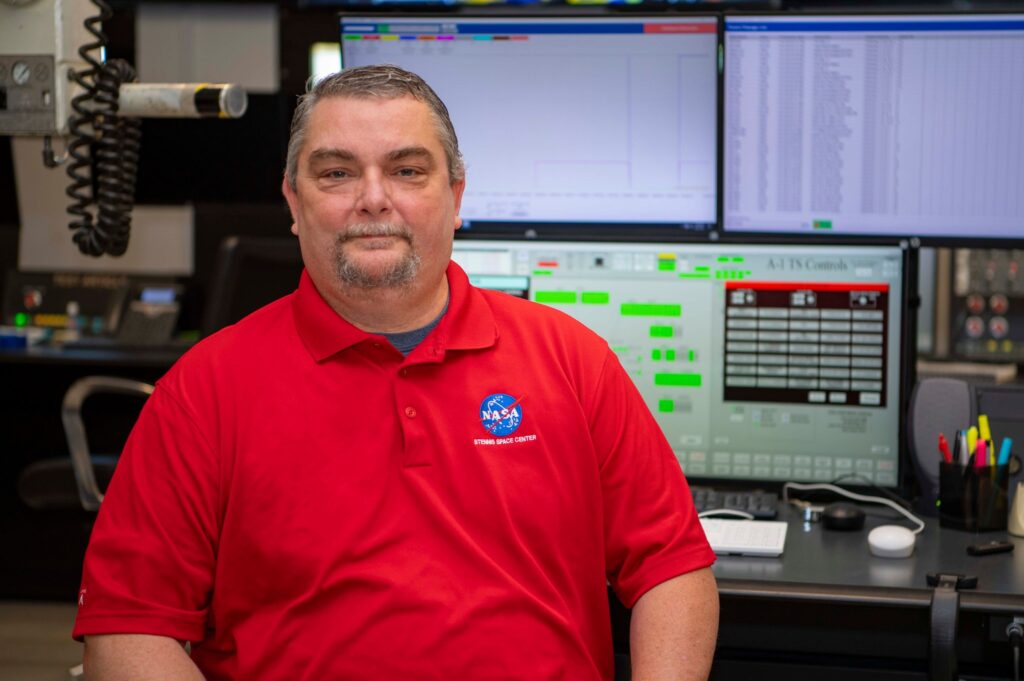Dwayne Lavigne, a controls engineer at NASA’s Stennis Space Center near Bay St. Louis, Mississippi, plays a crucial role in supporting NASA’s Artemis mission. By programming specialized computers for engine testing, Lavigne contributes significantly to the exploration of the Moon and the future of crewed missions to Mars.
As a native of Picayune, Mississippi, Lavigne takes pride in his work at America’s largest rocket propulsion test site. He describes his role as solving intricate puzzles, where each solution is both challenging and rewarding. “There are a lot of interesting problems to solve, and they are never the same,” Lavigne shared. “Sometimes, it is like solving a very cool puzzle and can be pretty satisfying.”
The Complex World of Engine Testing
Lavigne’s expertise lies in programming programmable logic controllers, which are essential for automating precisely timed operations during rocket engine tests. These controllers ensure that all parameters are met in the correct sequence, a complex task that can involve configuring 20 or 30 different elements to perform operations such as opening a valve or turning a motor on or off.
His responsibilities extend to establishing new signal paths between test hardware and the specialized computers. Additionally, Lavigne develops the human-machine interface, a screen graphic that test engineers use to interact with the hardware. This interface is crucial for the seamless operation of tests and ensures that engineers have the necessary tools to monitor and control the testing process.
A Legacy of Success and Teamwork
With over a decade at NASA, one of Lavigne’s proudest achievements is his contribution to the development of an automated test sequencing routine used during all RS-25 engine tests on the Fred Haise Test Stand. “We’ve had many successful tests over the years, and each one is a point of pride,” he remarked.
Working closely with technicians and engineers, Lavigne appreciates the collaborative effort required to support NASA’s mission. “The group of people I work with are driven to get the job done and get it done right,” he said. This teamwork is essential in an environment where precision is paramount, and the stakes are high.
From Data Entry to Engineering Excellence
Lavigne’s career at NASA Stennis spans 26 years, beginning as a contractor with the Naval Oceanographic Office and the Naval Research Laboratory. His journey from a data entry operator to a software developer and now a controls engineer highlights his dedication and growth within the federal city.
September marks 55 years since NASA Stennis became a federal city, a milestone that underscores its importance in space exploration. The center hosts over 50 companies, organizations, and agencies, sharing operating costs to allow tenants to focus more resources on individual missions. “Stennis has a talented workforce accomplishing many different tasks,” Lavigne noted. “The three agencies I’ve worked with at NASA Stennis are all very focused on doing the job correctly and professionally.”
Looking Ahead: The Future of NASA Stennis
As NASA continues to push the boundaries of space exploration, the work at Stennis Space Center remains vital. The center’s role in testing and developing technologies ensures that missions like Artemis are well-supported. Lavigne’s contributions exemplify the dedication and expertise required to achieve NASA’s ambitious goals.
The future looks promising as NASA Stennis continues to innovate and support groundbreaking missions. With engineers like Dwayne Lavigne at the helm of critical operations, the center is well-equipped to tackle the challenges of tomorrow’s space exploration endeavors.
About The Author
 Women’s European Championships 2023: A New Era Begins
Women’s European Championships 2023: A New Era Begins Sustainable Farming: A Herculean Task to Stay Within Earth’s Limits
Sustainable Farming: A Herculean Task to Stay Within Earth’s Limits Simplified Science Videos: Enhancing Comprehension but Inflating Confidence
Simplified Science Videos: Enhancing Comprehension but Inflating Confidence Ancient Egyptian DNA Study Reveals North African and Fertile Crescent Ancestry
Ancient Egyptian DNA Study Reveals North African and Fertile Crescent Ancestry Largest Martian Meteorite on Earth Set to Auction for $4 Million
Largest Martian Meteorite on Earth Set to Auction for $4 Million